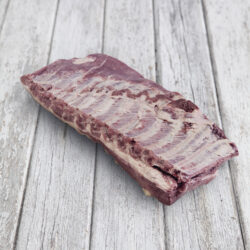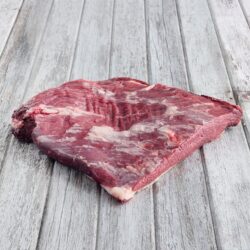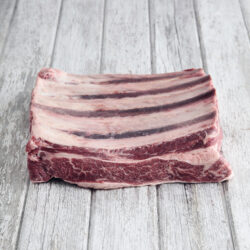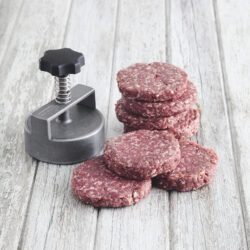Whether your preference is a butter-soft fillet steak, tasty sirloin or thrifty cut like bavette or skirt, care and attention should be paid when cooking your beef. With only a few minutes leeway between rare and well-done, timing is key. We’ve put together some tips to help you from start to finish.
Select your best frying pan
We recommend frying your steak, although you can grill it if you prefer. A heavy-duty, thick-based frying pan, ideally with a non-stick coating, will achieve good results, as will a heavy griddle pan or skillet. These types of pans get really hot – ideal for getting that slightly sweet, charred finish to the outside of your meat.
If the pan isn’t big enough for all your steaks, don’t be tempted to squeeze them in anyway. Cook them one or two at a time then leave them to rest as you cook the remainder of your batch.
Pick an oil
We stock a wide range of oils
Gordon Ramsay suggests using groundnut oil for cooking steaks – it has a mild flavour and can withstand very high temperatures without burning. Never use butter, unless you want to add a knob at the very end for a creamy finish.
The jury’s out when it comes to how you apply the oil. Some chefs like to oil the steak then add it to a hot dry pan, while others add a splash of oil directly to the pan. Once the oil starts separating, it’s hot enough to add the steak. Whichever method you use, the important thing is to get an even spread of oil.
Don’t be tempted to put your steak in early – if the oil is too cool, your meat could turn out greasy and under-browned.
Dressing your steak
Beef purists may prefer to take in the unadulterated rich flavour of a quality steak by adding nothing other than a few twists of salt and pepper. However, don’t season too early – salt will draw moisture from the meat. Gordon Ramsay suggests sprinkling black pepper and sea salt onto a plate, then pressing the meat into the seasoning moments before placing it into the pan.
How do you like it?
Blue: Should still be a dark colour, almost purple, and just warm. It will feel spongy with no resistance.
Rare: Dark red in colour with some juice flowing. It will feel soft and spongy with slight resistance.
Medium-rare: A more pink colour with a little pink juice flowing. It will be a bit soft and spongy and slightly springy.
Medium: Pale pink in the middle with hardly any juice flowing. It will feel firm and springy.
Well-done: Only a trace of pink colour but not dry. It will feel spongy and soft and slightly springy.
Get cooking
It’s very important to consider the size and weight of your steak before calculating the cooking time. If you’re unsure, take advantage of the expert eye of your butcher who should be able to tell you how long you need to cook your meat.
We recommend the following cooking times for a 3.5cm thick fillet steak:
- Blue: About 1½ mins each side
- Rare: About 2¼ mins each side
- Medium-rare: About 3¼ mins each side
- Medium: About 4½ mins each side
We also recommend the following for a 2cm thick sirloin steak:
- Blue: About 1 min each side
- Rare: About 1½ mins per side
- Medium rare: About 2 mins per side
- Medium: About 2¼ mins per side
Check your steak is cooked correctly
Use your fingers to prod the cooked steak – when rare it will feel soft, medium-rare will be lightly bouncy, and well-done will be much firmer.
Leave it to rest
A cooked steak should rest at room temperature for at least five minutes – it will stay warm for anything up to 10 minutes. Here, pure science comes into play – the fibres of the meat will reabsorb the free-running juices resulting in a moist and tender finish to your steak.




